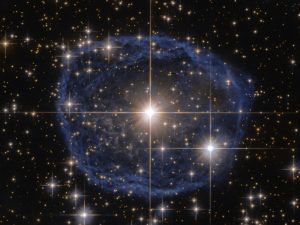New Evolutionary Ideas about the Earth
Psalm 19:1
“The heavens declare the glory of God; and the firmament sheweth his handywork.”
 We know how the Earth and the other planets of the Solar System were formed, don’t we? In the beginning, there was a lot of dust around the Sun, and gravity caused particles to stick together, eventually forming planets. And the dust was formed by a supernova explosion.
We know how the Earth and the other planets of the Solar System were formed, don’t we? In the beginning, there was a lot of dust around the Sun, and gravity caused particles to stick together, eventually forming planets. And the dust was formed by a supernova explosion.
Evolutionists assume a continual cycle of star life, followed by novae, then new stars, new novae and so on. Therefore, the Sun’s parent star went supernova, then the Sun formed, and other dust became the planets. As atheist astrophysicist Lawrence Kraus has said, “The stars died, that we might live”.
Two notable heavier radioactive isotopes formed by supernovae are said to be aluminum-26 and iron-60. Solar System planets show evidence of plenty of aluminum-26 but much lower quantities of iron-60, all of which is now assumed to have decayed into stable nickel-60. An alternative theory of planetary formation suggests that the Sun’s progenitor could be a type of object known as a Wolf-Rayet star.
Observed examples of such stars seem to be large and massive – perhaps 50 to 60 times the mass of the Sun. The bubble nebulae surrounding these stars seem to contain similar quantities of aluminum-26 and iron-60.
It is not wrong for evolutionists, like creationists, to have different models of cosmology. It is simply of concern when evolutionists pretend that they know the answers for certain when we are not dealing with examples of observed science, by adherents of either evolutionary model.
The one person who did observe planet formation was the One who made them; who made Earth first on Day One, and the other objects on Day Four. Author: Paul F. Taylor
Prayer: Your Word, Lord, sheds light on all we need to know about Your universe. Thank You that, guided by Your word, we can explore and discover new things about the universe that we live in. Amen.
Ref: University of Chicago. (2017, December 23). Scientists describe how solar system could have formed in bubble around giant star. ScienceDaily. Retrieved December 27, 2017 from < www.sciencedaily.com/releases/2017/12/171223134850.htm >. Image: Judy Schmidt, Hubble Telescope, copyright: < https://www.spacetelescope.org/copyright/ > (Creative Commons Attribution-Share Alike 4.0 International).